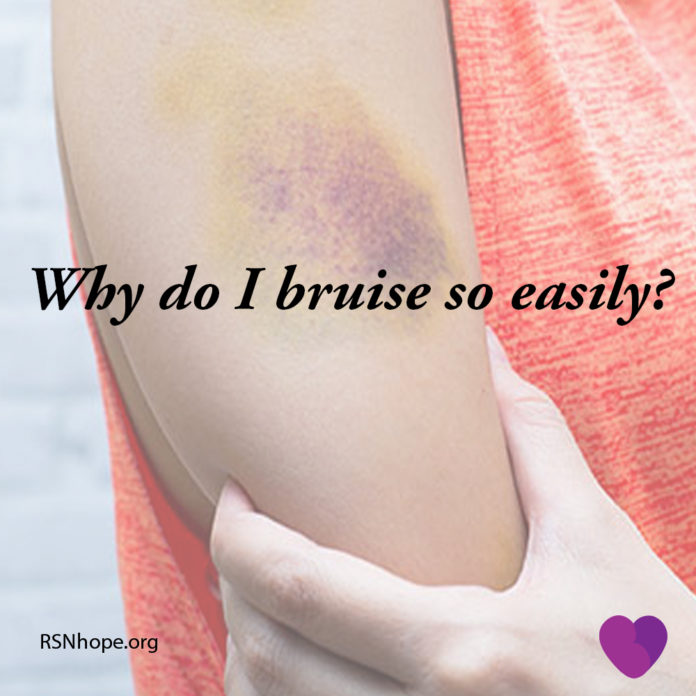For those with chronic kidney disease, frequent and easy bruising presents problems and challenges.
A bruise occurs when small blood vessels close to the skin’s surface break. Blood then leaks into the surrounding area causing discoloration. As the body breaks down and reabsorbs the blood, the color of the bruise changes from red and blue to green and yellow. Eventually the bruise disappears.
Among the older CKD population, kidney disease compounds the normal effects of aging. Capillaries become more fragile and tissue surrounding the blood vessels weakens. Skin thins and loses the fatty tissue that helps protect vessels.Various medications can also contribute to easy bruising such as Plavix and Aspirin. Corticosteroids like Prednisone causes skin to thin and therefore predispose to easy bruising.
Good nutrition is necessary to counteract easy bruising. Vitamin C keeps blood vessels healthy, Vitamin B2 helps maintain healthy skin and Vitamin K is a vital part of the clotting process. Illness and lack of appetite prevent adequate intake of vitamins.
Use common sense to head off accidents that could result in bruising. Be aware of hazards in your environment. For those prone to falls, use assistive devices such as walkers or canes. In health care facilities, be careful to avoid bumping bed rails. Keep elbows and hands tucked when being transported by wheelchair. Both diabetics and non-diabetic kidney patients may suffer from neuropathy which may lessen the sensation of painful injuries.
Wearing long-sleeved clothing can offer good protection, too. Keep nails short, clean, and smooth to forestall scratching injuries.
Check your skin regularly and, most importantly, report frequent and easy bruising to the physician. Never start, change, or stop a medication without checking with a health care professional.


